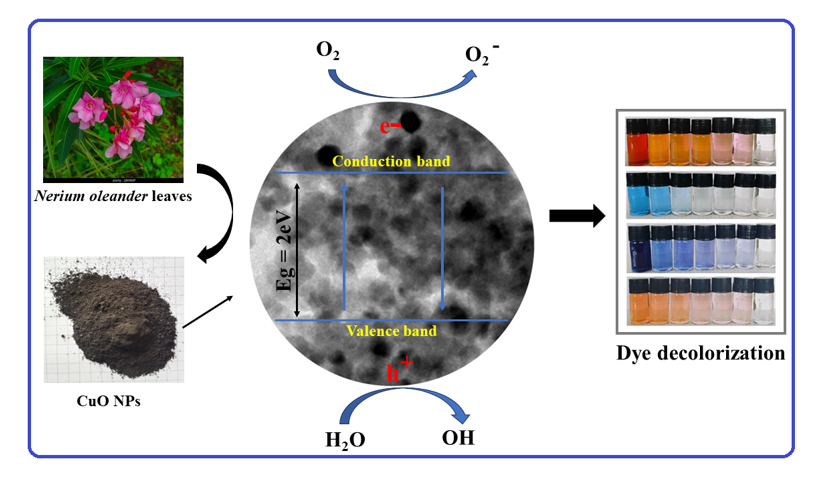
The proliferation of environmental pollution, particularly from hazardous industrial dyes, poses a significant threat to ecosystems and aquatic life. This study uses extract from Nerium oleander leaves as a natural capping and reducing agent to produce copper oxide nanoparticles (CuO NPs), an ecologically acceptable way to tackle this problem. The CuO nanoparticles have improved physicochemical characteristics, as shown by their average crystalline size of 15.56 nm and decreased particle size of 31.84 nm. Additional studies such as SEM, EDX, TEM, and zeta potential were accomplished and revealed the spherical structure; an elevated negative zeta potential of -25.6 mV was observed on the surface property. The photodegradation efficacy of these bio-synthesized CuO NPs was assessed against various industrial dyes, including Rhodamine 6G, Malachite Green, Eosin Yellow, and Reactive Black. The results demonstrated exceptional degradation efficiencies, with rates of up to 97.48%, 99.54%, 89.73%, and 89.33% respectively. The decolorization of organic dyes presented a visual cue that the degradation process was progressing. Notably, using Nerium oleander leaves as reducing agents contributed to the nanoparticles' stability, making them suitable for repeated cycles of photocatalysis. This research underscores the potential of green synthesis methods and highlights the vital role of plant-based reducing agents in advancing environmentally friendly nanomaterials for wastewater treatment and environmental remediation. The findings offer a promising pathway toward sustainable and eco-friendly solutions to mitigate the environmental impact of hazardous industrial dyes, fostering responsible industrial practices and preserving aquatic ecosystems.
Total file downloads: 13